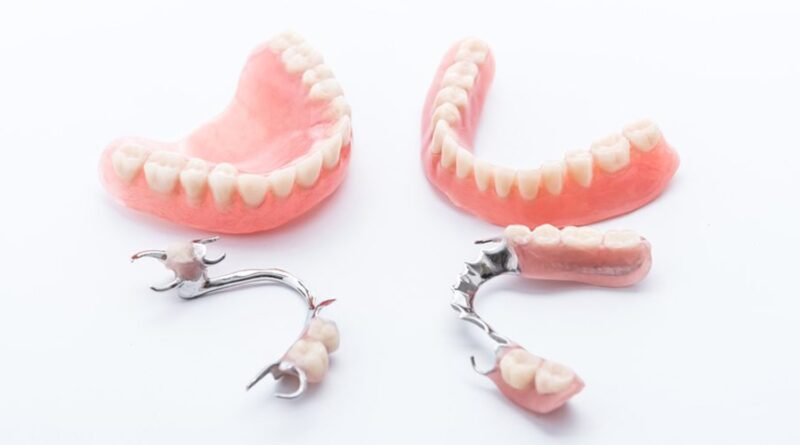Acrylic Partial Dentures: A Cost-Effective and Comfortable Option
If you have lost some of your natural teeth, you may be wondering what are the best options to replace them. You may have heard of partial dentures, which are removable appliances that can fill the gaps in your smile. But did you know that there are different types of partial dentures, and that one of them may be more suitable for you than the others? In this article, we will explain what are acrylic partial dentures, how they differ from other types of partial dentures, and why they may be a cost-effective and comfortable option for you.
What are partial dentures?
Partial dentures are artificial teeth that are attached to a metal or plastic base that fits over your gums. They are designed to replace one or more missing teeth in your upper or lower jaw. Partial dentures can help you restore your chewing function, improve your speech, and enhance your appearance. They can also prevent your remaining natural teeth from shifting or drifting into the empty spaces.
Partial dentures are removable, which means you can take them out and put them back in as needed. You will need to clean them daily and store them in a moist container when not in use. You will also need to visit your dentist regularly to have them adjusted and checked for fit and comfort.
What are the different types of partial dentures?
There are mainly two types of partial dentures: metal and acrylic. Metal partial dentures have a metal framework that supports the artificial teeth and clasps that attach to your natural teeth. Acrylic partial dentures have a plastic base that matches the color of your gums and metal or plastic clasps that attach to your natural teeth. Both types of partial dentures can be customized to match the shape, size, and color of your natural teeth.
What are the advantages of acrylic partial dentures?
Acrylic partial dentures have some advantages over metal partial dentures, such as:
- They are cheaper and easier to make than metal partial dentures. This means you can get them faster and with less hassle.
- They are lighter and more flexible than metal partial dentures. This means they can adapt better to the shape of your mouth and cause less irritation to your gums and cheeks.
- They are easier to repair and modify than metal partial dentures. This means you can have them fixed or changed more quickly and conveniently.
- They are more aesthetically pleasing than metal partial dentures. This means they can blend in better with your natural teeth and gums and give you a more natural-looking smile.
What are the disadvantages of acrylic partial dentures?
Acrylic partial dentures also have some disadvantages compared to metal partial dentures, such as:
- They are less durable and stable than metal partial dentures. This means they can break or wear out more easily and may need to be replaced more often.
- They are more prone to staining and plaque accumulation than metal partial dentures. This means you will need to clean them more thoroughly and frequently to maintain their appearance and hygiene.
- They are more likely to cause allergic reactions or infections than metal partial dentures. This means you will have to be more careful and vigilant about any signs of irritation or inflammation in your mouth.
How to care for your acrylic partial dentures?
To keep your acrylic partial dentures in good condition and avoid any complications, you should follow these tips:
- Brush your partial dentures at least twice a day with a soft-bristled toothbrush and a non-abrasive denture cleaner. Do not use regular toothpaste, as it can damage the acrylic surface.
- Rinse your partial dentures after every meal and snack to remove any food particles and debris.
- Soak your partial dentures overnight in a denture-cleaning solution or plain water. Do not use hot water, as it can warp the acrylic base.
- Before putting your partial dentures back in your mouth, rinse them well and brush your natural teeth and gums.
- Visit your dentist at least once every six months for a professional cleaning and examination of your partial dentures. Your dentist may also need to adjust or reline your partial dentures to ensure a proper fit and comfort.
How to get acrylic partial dentures?
If you are interested in getting acrylic partial dentures, you should consult your dentist first. Your dentist will examine your mouth and determine if you are a suitable candidate for partial dentures. Your dentist will also explain the pros and cons of acrylic partial dentures and other types of partial dentures, and help you choose the best option for your needs and preferences.
Your dentist will then take impressions of your mouth and send them to a dental laboratory, where your acrylic partial dentures will be made. You may need to visit your dentist a few times to try on your partial dentures and make any adjustments before they are finalized. Once your partial dentures are ready, your dentist will teach you how to insert and remove them, and how to care for them.
Conclusion
Acrylic partial dentures are a cost-effective and comfortable option for replacing missing teeth. They are cheaper, lighter, more flexible, and more aesthetically pleasing than metal partial dentures. However, they are also less durable, more prone to staining, and more likely to cause allergic reactions or infections than metal partial dentures. Therefore, you should weigh the advantages and disadvantages of acrylic partial dentures carefully, and consult your dentist before deciding.
